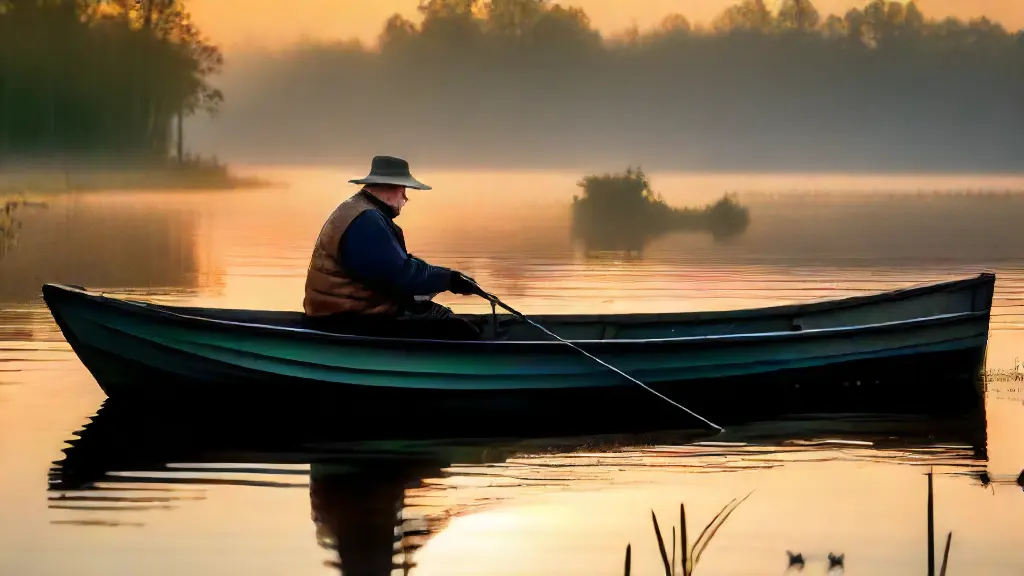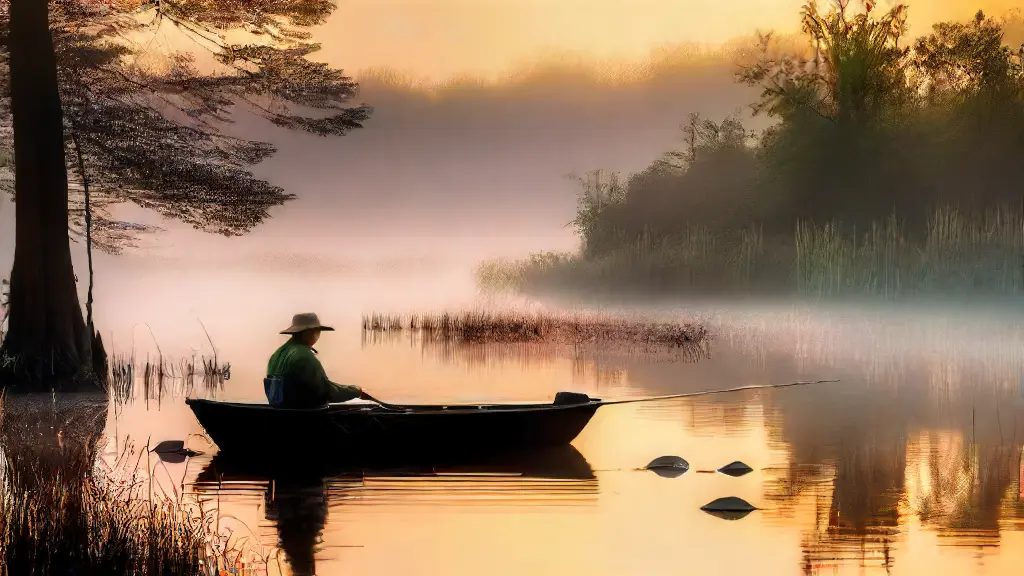How to Use Weedless Jigs for Slow Retrieve Fishing

Fishing in dense aquatic cover can be a frustrating experience, especially when trying to land a catch. For many anglers, navigating thick vegetation is a constant challenge that requires a specialized approach to catch bass.
That’s where weedless jigs come in – a versatile and effective tool that allows for precise manipulation of the lure’s movement, making it ideal for slow retrieve fishing in dense vegetation.
Weedless jigs conquer the challenge of working through dense vegetation without getting stuck, allowing anglers to manipulate the lure’s movement with precision.
They can be used in a variety of presentations, from slow to fast retrieves, making them a versatile and effective tool for any fishing situation. When using weedless jigs for slow retrieve, precision is key to navigating through aquatic vegetation and finding the right cover amidst slow-moving water.
Weedless Jigs for Slow Fishing
Fishing in dense aquatic vegetation demands a thoughtful approach, as it can be a formidable challenge even for the most experienced anglers. To navigate this intricate zone, anglers must first understand the importance of gear selection.
The definition of a weedless lure is crucial to grasping its application.
Essentially, a weedless jig is designed to minimize the amount of vegetation that becomes tangled with the lure, allowing for a smoother presentation and increased chances of landing a fish.
By choosing the right gear, anglers can gain a strategic advantage in this concealed environment.
Dense aquatic vegetation comes in various forms, including submerged aquatic vegetation (SAV), floating aquatic vegetation (FAV), and emergent aquatic vegetation (EAV).
Understanding the growth habits of these different types is essential for selecting the right techniques and gear. Slow retrieve fishing can be an effective tactic in the zones, using the right gear, line, reel, and jigs, along with the right techniques, structure, and concealment, especially when concealing.

What is Aquatic Cover
Embarking on an aquatic adventure requires a deep understanding of the intricate relationships within water bodies. A crucial component of this ecosystem is aquatic cover, which shapes the underwater landscape and has a profound impact on the fishing experience.
Aquatic cover refers to the submerged or emergent vegetation that inhabits a body of water, such as rivers, streams, or hidden ponds.
This vegetation can take the form of aquatic plants like water lilies, cattails, or duckweed, and can provide a haven for fish to hide, feed, and breed.
Strong aquatic cover can significantly enhance the overall fishing experience, offering numerous opportunities to target fish and creating a more diverse and healthy ecosystem. We will explore the importance of aquatic cover, examine its different types, and provide guidance on how to adapt your fishing techniques to effectively target fish in these.
Finesse Precision Retrieval
When navigating the complex world of fishing, it’s easy to get caught up in the excitement of catching the big one, but often it’s the small, subtle details that make all the difference. A delicate balance between presentation and precision is key to success in Slow Retrieve fishing.
Understanding the importance of finesse is crucial in slow retrieve fishing.
Unlike traditional retrieve methods, finesse retrieval techniques are designed to mimic the natural movement of baitfish, allowing anglers to present lures in a stealthy manner.
This approach can be particularly effective in dense vegetation, where a traditional retrieve may not be able to reach the target area.
To adapt to vegetation structure and density, anglers must use the right tackle and line for precise placement. A longer trip allows for greater control and stability, while a rod with a sensitive drag system can help detect even the slightest tug on the line, allowing for a stealthy approach in any weather.
Slowmoving Lures for Vegetation
As you prepare to reel in the big catch, it’s essential to understand the intricacies of presentation and retrieval techniques. When it comes to dense vegetation, slow-moving lures require a thoughtful approach to entice fish to bite.
Slow-moving lures, particularly those designed for dense vegetation, require a unique approach to presentation, retrieval, and storage.
Water plays a significant role in determining the effectiveness of slow-moving lures, as temperature can greatly influence lure behavior.
Mastering the Art of Slow-Moving Lures
• Learn the importance of lure pattern in dense vegetation
As outlined in the outline provided, the article will delve into the benefits of long, delicate retrieval, techniques for selecting the right tackle for the job, and practice exercises to hone your slow-moving lure skills. By the end of this article, you’ll be fully prepared to tackle the planning and storage of your watering system, based on a thorough understanding of water temperature, behavioral patterns, and strategic preparation.
Mastering Slow-Moving Lures
- Slow-moving lures require a thoughtful approach when fishing in dense vegetation.
- Water temperature can greatly influence the behavior of slow-moving lures.
- Long, delicate retrieval is an effective technique for slow-moving lures in dense vegetation.
- Selecting the right tackle for the job is crucial for successfully using slow-moving lures.
Concealed Structure Fishing
As anglers venture into the world of fishing, they often overlook the intricate relationships between structure, vegetation, and aquatic life in their pursuit of a big catch. Fisherfolk frequenting waterways and fisheries have discovered that understanding these connections is key to success.
Cone-shaped structures, sunken logs, and rocky outcroppings are just a few examples of the countless concealed structures that exist beneath the surface of our waterways.
These underwater features play a crucial role in influencing the behavior of aquatic life, making it an essential aspect of any fishing strategy.
The concept of concealed structure fishing is built around the idea of presenting your bait near these structures in a way that triggers a reaction from the fish. But what makes this approach so effective when it comes to reeling in the big ones is the expert combination of high-quality equipment, precision baitcasting, and strategic placement in waterways that are teeming with aquatic life.
Overcoming Stealthy Approach
Gone are the days when anglers believed that the only way to reel in a catch was through brute force and aggression. In reality, adopting a subtle approach to fishing can be the key to unlocking a bounty of aquatic treasures.
Fish are naturally drawn to slow retrieve techniques, which allow them to detect the presence of prey and strike with precision.
This is especially true in dense vegetation, where rapid movements can send them scurrying for cover.
Aquaticecology plays a vital role in understanding the intricacies of fish behavior and waterbodies.
For instance, certain species of fish have evolved to thrive in dense aquatic vegetation, utilizing the complex network of stems and leaves as shelter and foraging grounds. opportunities to study wildlife, waterbodies, aquatic ecology, fish identification, species, habitats, migration routes, foraging behavior, and aquatic food webs.
Facts Supporting Subtle Fishing Techniques
- Fish are naturally drawn to slow retrieve techniques, allowing them to detect prey and strike with precision.
- Rapid movements can send fish scurrying for cover in dense vegetation.
- Aquatic ecology plays a vital role in understanding fish behavior and waterbodies.
- Certain species of fish have evolved to thrive in dense aquatic vegetation, utilizing it as shelter and foraging grounds.
Precise Baitcasting Techniques for Weedless Jigs
The precision with which they cast their bait. A well-placed baitcast can make all the difference between a missed strike and a successful catch.
Selective lure presentation is essential when fishing with weedless jigs.
A weedless jig consists of mandatory components such as a soft, flexible skirt and a durable body designed to prevent weed accumulation.
The type of jig body, whether curly-tail or swim-bait-inspired, significantly impacts lure behavior and presentation.
When retrieving through dense vegetation, anglers must adopt a sustained retrieval rhythm to allow for optimal lure movement and reduced snagging.
Proper retrieve speed plays a critical role, influencing both lure behavior and presentation. The slowretrieve technique is often used in conjunction with other methods like fishing, jigging, and float fishing, depending on the type of fishing you are doing.
Effective Fishing Strategies for Dense Vegetation
Fishing in tight, watery spaces requires a subtle approach, as the gentle lapping of waves against the vegetation can be a siren’s call to fish. One of the most critical factors to consider when fishing amidst weedbeds is the type of aquatic growth and its patterns.
By understanding the dynamic patterns of the vegetation, you can better plan your approach and increase your chances of success.
A slower retrieve is often the key to enticing fish in dense vegetation.
By adopting a deliberate and controlled pace, you can mimic the natural movement of prey and draw curious fish into striking range.
Fishingspots such as weed edges and undercut banks are particularly productive areas to target, as they often hold the most fish.
Pay attention to subtle changes in water current and structure to identify the perfect hiding spots. In these dense environments, patience and persistence are crucial, as it can take hours to find the right enticement, enticing fish to the baiting areas of the fishingspots, hiddenspots, undercutbanks, weedbeds, and rockystructures, only to have them suddenly vanish near sunkenlogs.
| Type of Aquatic Growth | Pattern | Retrieve Speed | Target Areas |
|---|---|---|---|
| Vegetation | Dynamic | Slower | Weed Edges, Undercut Banks |
| Vegetation | Static | Faster | Rocky Structures |
| None | N/A | N/A | Sunken Logs |
Best Weedless Lures for Fishing in Lily Pads
Best Weedless Topwater Lures for Bass


